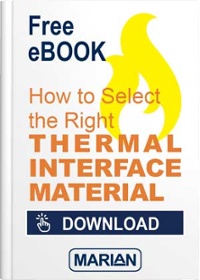
Phase Change Materials
This is the second post in our Hot Summer Blog Series about Thermal Management Materials. In this post, we will focus on phase change materials.
True to their name, phase change materials are solid at room temperature and soften as temperatures increase. This softening allows the material to flow and completely fill surface irregularities and gaps between the heat source and the heat sink. This allows for little to no thermal resistance and very thin bond lines. Heat will transfer efficiently and effectively, allowing for the device to run at a lower temperature. Once the thermal interface has been formed it will remain stable until the heat sink is physically removed from the heat source. Typical applications exist in consumer electronics, telecom, automotive electronics, industrial electronics, medical, and military/aerospace.
This short video shows the phase change material soften and wet-out as it is heated:
Phase Change Features & Benefits
- At room temperature in a solid state, PCMs are easy to handle and install
- PCMs can be die-cut to a precise shape needed for the application area
- PCMs offer the same thermal performance as thermal grease without the mess
- PCMs offer high thermal conductivity
- PCMs will not flow out of the interface
- PCMs usually require slight clamping pressure for performance
- UL94V-0, RoHS, REACH
Marian has the capabilities to supply phase change materials custom die-cut and rolled onto a liner, which makes them easy to apply accurately and cleanly. Common phase change material suppliers include 3M, Polymer Science, Chomerics, and Laird. Marian can supply material samples and prototypes for testing and evaluation.
Want to learn more? Download our Free Guide: How to Select the Right Thermal Interface Material.


